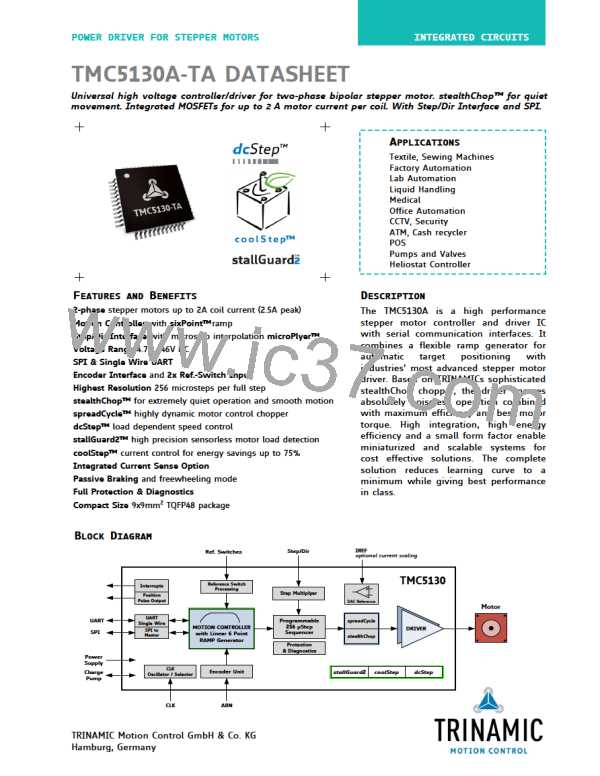TMC5130A DATASHEET (Rev. 1.14 / 2017-MAY-15)
114
28.2 Using an External Clock
When an external clock is available, a frequency of 10MHz to 16MHz is recommended for optimum
performance. The duty cycle of the clock signal is uncritical, as long as minimum high or low input
time for the pin is satisfied (refer to electrical characteristics). Up to 18MHz can be used, when the
clock duty cycle is 50%. Make sure, that the clock source supplies clean CMOS output logic levels and
steep slopes when using a high clock frequency. The external clock input is enabled with the first
positive polarity seen on the CLK input.
Attention
Switching off the external clock frequency prevents the driver from operating normally. Therefore be
careful to switch off the motor drivers before switching off the clock (e.g. using the enable input),
because otherwise the chopper would stop and the motor current level could rise uncontrolled. The
short to GND detection stays active even without clock, if enabled.
28.3 Considerations on the Frequency
A higher frequency allows faster step rates, faster SPI operation and higher chopper frequencies. On
the other hand, it may cause more electromagnetic emission of the system and causes more power
dissipation in the TMC5130A digital core and voltage regulator. Generally a frequency of 10MHz to 16
MHz should be sufficient for most applications. For reduced requirements concerning the motor
dynamics, a clock frequency of down to 8MHz (or even lower) can be considered.
www.trinamic.com

 TRINAMIC [ TRINAMIC MOTION CONTROL GMBH & CO. KG. ]
TRINAMIC [ TRINAMIC MOTION CONTROL GMBH & CO. KG. ]